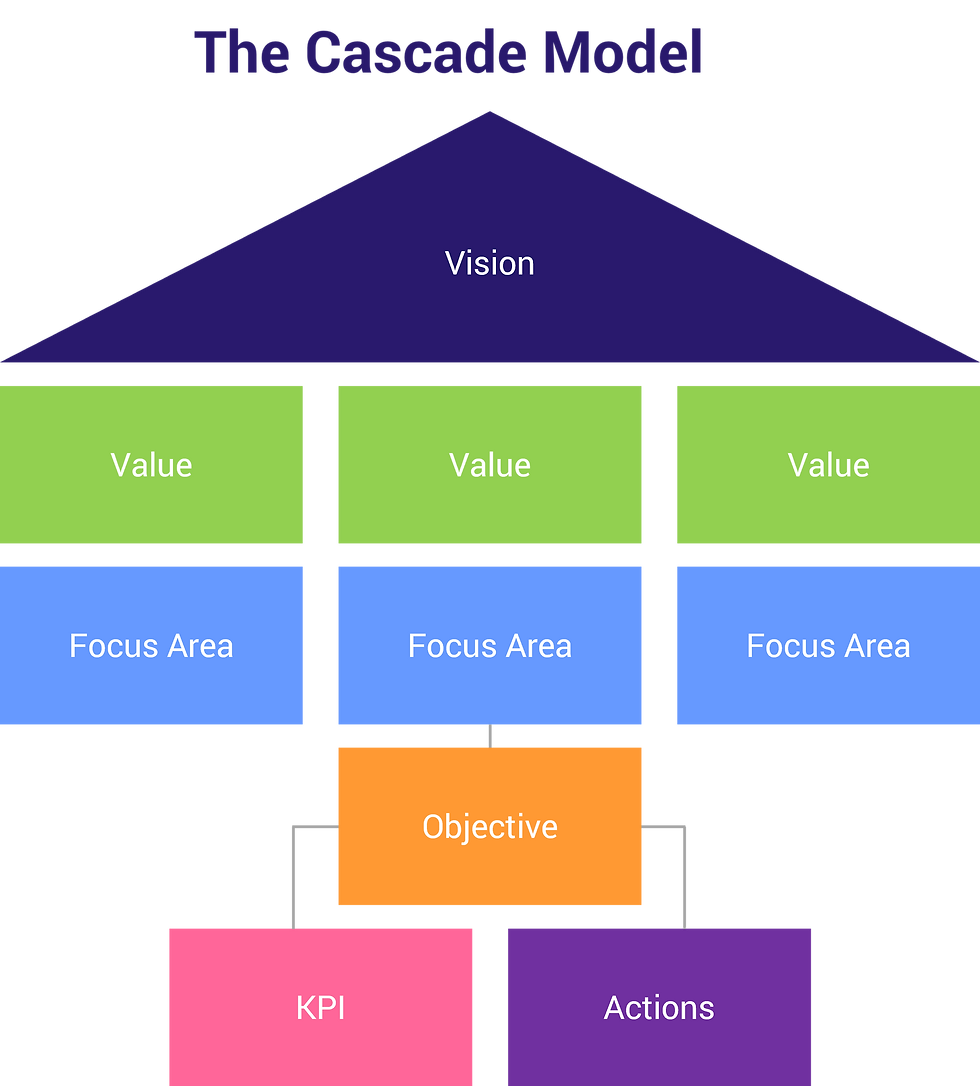Where to Start for Your New Strategic Plan
- Tim Brennan
- Jan 5, 2023
- 3 min read

Every company is in a constant balancing act between its high-level ambitions and specific day-to-day work. The one time that leadership really gets to put pen to paper on what exactly the high-level and specifics are and how the two should support each other is when constructing the company’s Strategic Plan.
There are many different models that can be used for Strategic Planning, but the one we’ll look at is the Cascade Model. (Strategic Planning Models: The 5 Best Strategy Models (cascade.app))

Cascade is a company that offers software built around their model that helps you build, track, and execute your Strategic Plan. Even if your plan is not executed on a scale large enough to warrant committing to the implementation of a new system, I’ve found the Cascade Model itself to be an extremely valuable tool to structure any Strategic Plan. It clearly delineates how a company’s highest level of ambition works its way down to the specific actions carried out during the life of a Strategic Plan.
This level of transparency helps build a common understanding between all levels of an organization leading to a more successful Strategic Plan. The model works by having the organization: define its Vision, identify values that support that Vision, choose focus areas that align with the organization’s values, create objectives that will strengthen those focus areas, commit to relevant KPIs (Key Performance Indicators), and list actions and projects that will help accomplish each objective. Here are some main points about each step:
Define a Vision Statement that describes the desired state of your business within the next five to10 years. It should be short, ambitious, and focus more on an idyllic version of your company and less on how to get there.
Identify three to five Values that describe how you want your organization to function as it achieves its Vision. Leave out the fluff and write values that the people of your organization can lean on and be guided by. Safety, passion, and creativity are some good examples.
Choose three to six Focus Areas that build the foundation of your strategy. These should be a maximum of six words each, be specific enough that you can be sure activities support their associated focus area, not contain ambiguous buzz words like “maximize,” and not contain any metrics (we’ll get to that level of detail later). Some examples are “Top Place to Work,” “Aggressive Marketing,” and “Exponential Growth.”
Create three to six Objectives for each Focus Area. These are specific goals with a completion date. Cascade recommends a formula of Action/Detail/Deadline, for example, to become/a more popular brand among teens/by December 1st, 2023. You can also think about these as SMART (Specific, Measurable, Achievable, Relevant, Time-Bound) goals.
Commit to tracking one or two KPIs for each objective that will let you know how close you are to achieving your desired outcome. These should define success and failure and contain Action/Detail/Value/Unit/Deadline. For example, Increase/monthly website traffic from teens/by 10,000/page visits/ by December 1st, 2023.
List Actions and Projects that your organization will carry out to accomplish the objectives of its new Strategic Plan. This is the tangible work your people will do throughout the life of the plan. The structure of Projects may vary as they depend on the project management methods of an organization, but generally, your projects should include tasks, milestones, durations, responsibilities, risks, and dependencies.
This is an example of an excellent model for Strategic Planning, and if you’d like to learn more about the Cascade Model or their products, you can visit their website at Strategic Planning Models: The 5 Best Strategy Models (cascade.app).
Overall, regardless of the model you use or the size of your organization, the best place to start when constructing your Strategic Plan is at the top. If you have a clear and transparent vision, you can carry that down through every level of your plan to arrive at a set of actions that give your organization a strong and precise direction for the next step in its evolution.
Comments